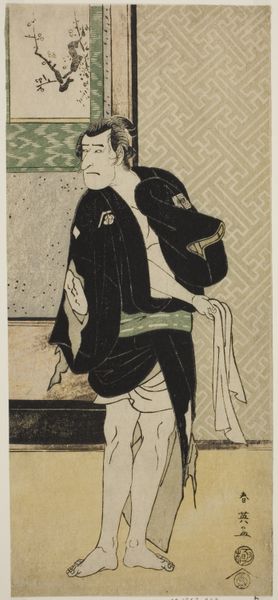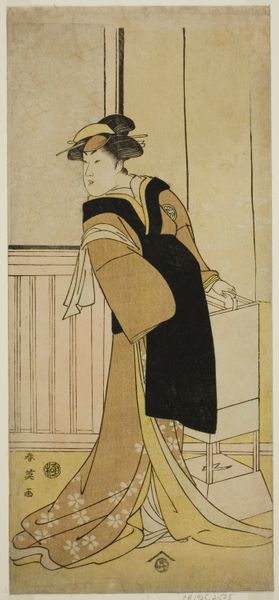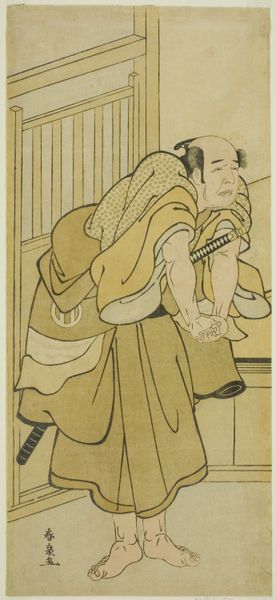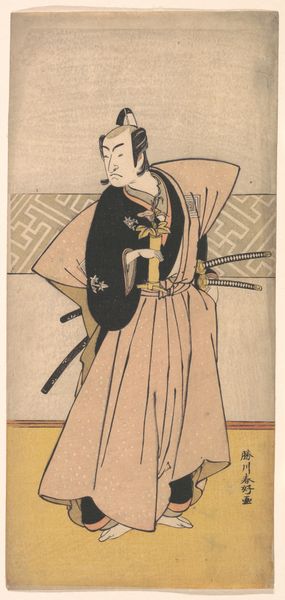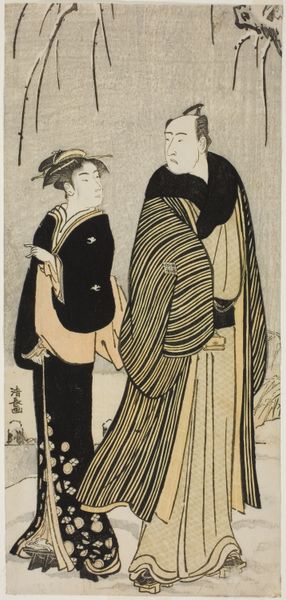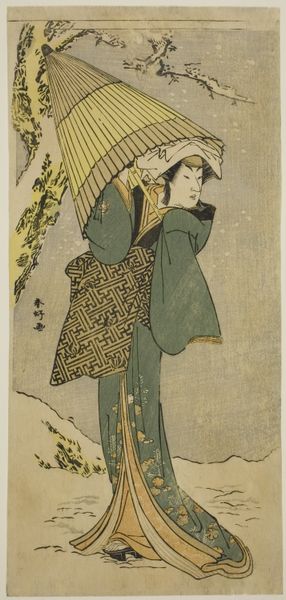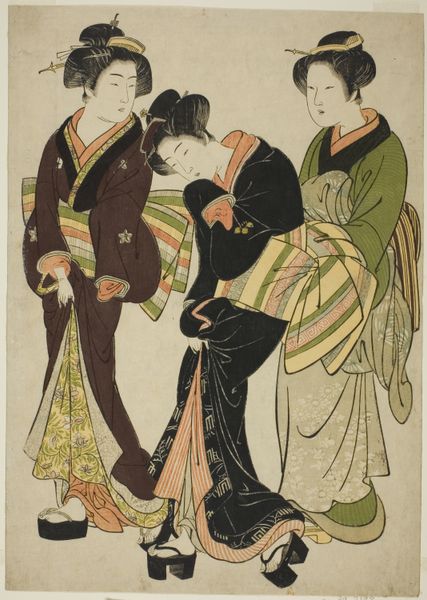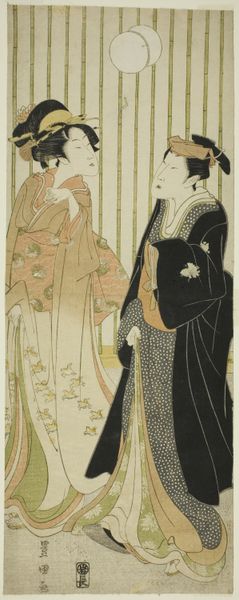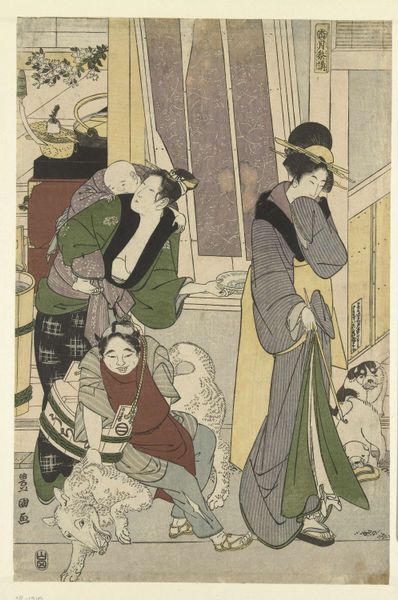
Wakayama Tomisaburo as a Woman in a Yellow and Red-Brown Striped Kimono 1788 - 1808
0:00
0:00
print, woodblock-print
#
portrait
# print
#
caricature
#
asian-art
#
caricature
#
ukiyo-e
#
woodblock-print
#
men
Dimensions: 12 x 5 1/2 in. (30.5 x 14.0 cm)
Copyright: Public Domain
Curator: Here we have a fascinating woodblock print by Katsukawa Shun'ei dating roughly from 1788 to 1808. It’s titled "Wakayama Tomisaburo as a Woman in a Yellow and Red-Brown Striped Kimono." Editor: What strikes me immediately is the flatness. The colors are muted, earthy—the texture must be beautiful close up. You can almost feel the grain of the wood. Curator: Absolutely. Shun’ei was working within the ukiyo-e tradition, “pictures of the floating world," reflecting the pleasures of Edo period Japan. It is currently housed in the collection of the Metropolitan Museum of Art. These prints were mass-produced, influencing how art reached wider audiences, far from elite circles. Editor: Interesting that a Kabuki actor, a male, is shown dressed as a woman. What does that reveal about labor and production, the means and skills necessary to represent fluid social boundaries, class mobility, in Edo society? The artist makes a living depicting popular actors, essentially image manufacture? Curator: Exactly. Shun’ei and others portrayed Kabuki actors precisely because they were celebrities who embodied the era’s social fluidity and cultural obsessions. Kabuki itself pushed against rigid social norms. Caricature, like this, could amplify and critique those performative identities. It really speaks to the democratization of the arts during the Edo era and the shifting sands of society. These prints found wide audiences. Editor: Thinking materially, each of those lines and planes signifies a craftsman’s time and handiwork. What choices led to that flat perspective? Also, those geometrical grids and angular floor, compared with the actor's smooth skin and fabrics: what statement do they propose regarding labor’s role versus an individual's celebrity, when both need each other? Curator: Fascinating to consider it from that point. And Wakayama's gaze looking left beyond us creates a unique experience as a viewer; what does he or the artist wish for us to think of while looking elsewhere? Perhaps the intent was to question social perceptions. Editor: The layering of identity here—a man playing a woman, depicted by an artist working for the masses—is wonderfully complex when you consider what went into manufacturing and popularizing these works. This helps bring forward the significance of the means by which cultural attitudes are manifested. Curator: It highlights how artists, even within commercial constraints, shaped societal values. A delicate print opens so many questions when considering context!
Comments
No comments
Be the first to comment and join the conversation on the ultimate creative platform.

